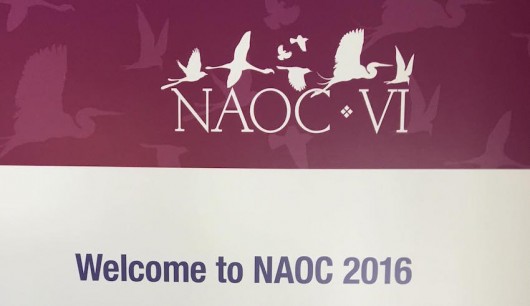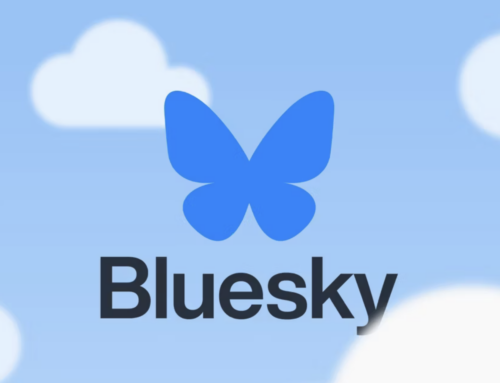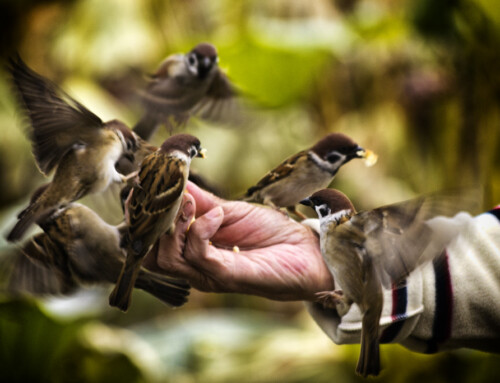
If you look at the conference Twitter hashtag – #NAOC2016 – its clear there are plenty of people engaged with and around the conference. NAOC organisers have been great at promoting the use of social media ahead and during the conference itself, and even ran an excellent social media workshop yesterday ahead of the conference proper. But its not possible to tell from the #NAOC2016 stream which tweeps are actually delegates. So how else could I gauge social media activity/awareness here.
Whilst putting up my poster earlier today it came to me. How many of todays posters included a social media identifier? And with exhibitors in the hall, how many of these more commercial, business-focused booths included social media identifiers on their banners and booth signs (excluding business cards and leaflets on the table).
So with my poster providing evidence that ornithologists are indeed very social media engaged, what evidence of this did I find from the posters and exhibitor booths this lunchtime?
Poster presentations
OK, not all of the posters are yet up ahead of this evenings poster session (213 due to be presented this evening). But 161 (69%) were – easily a good enough sample size for my needs. But the results surprised me. Of the 161 posters only 6 (3.7%) included a Twitter, Facebook or YouTube identifier. Also, only 5 (3.1%) included a QR code for this smartphone generation to scan and link direct to a webpage.
Exhibitors
Reeling from this shock result I moved around the hall and looked at the exhibitor booths – 61 in total. Surely these more business savvy guys would be more switched on to the power of social media. Only just. Only 5 (8.1%) of the 61 booths had social media identifiers displayed (some not their unique identifier but just social media icons – at least that was something), and only 4 (6.5%) used QR codes to link to their websites.
Unlike with poster authors whom I do not know, I do know more than a few of the exhibitors and know they are active on social media. Some are even active on our #ornithology hashtag we use to promote bird research on Twitter, reaching up to 290,000 people a day. So you might think that these exhibitors in particular would think to promote their social media identifiers at the largest ornithology conference – ever! And looking down the list of those using the #NAOC2016 hashtag on Twitter, most of these already active #ornithology engagers aren’t engaging with the #NAOC2016 conference hashtag. I wonder how many of the exhibitors have tweeted ‘come see our booth’ using the #NAOC2016 tag? I only recall seeing a couple.
Some thoughts
The social media awareness of poster authors and exhibitors at NAOC2016 has surprised me. It goes against the growth of the active ornithology community we’ve built up on Twitter, and to a lesser extent on Facebook too, over recent years.
For me they’re really missing a key opportunity to promote their research (poster authors) and activities (exhibitors) to a captive audience. If this is representative of the conference delegation as a whole, then frustratingly, if they are not on social media, I and other presenters and exhibitors have no way of reaching out to them at a conference such as this. This latter point also raises the issue of how does any presenter get noticed at such a massive event if the majority of delegates are not on social media? The programme/schedule for an event such as this is huge, and with up to 14 parallel sessions each morning and afternoon, even working through the conference schedule is hard to find the symposia, round tables and other sessions you as a delegate are interested in. But for poster authors, who are not grouped under subject, its going to take a dedicated delegate to work their way through the list of 431 poster presentations listed for presentation. As a conference host myself (with the BOU) I now ask whether hosts do more in future to promote all areas of the programme more effectively to delegates, particularly those not on social media.
At NAOC2016?
Then please come and see my poster – How social are ornithologists? – and discuss the benefits of social media in research with me:
Wednesday 17 August, morning break 1000 – 1030, lunch 1200 – 1300, afternoon break 1500 – 1530 and Poster Session Reception 1700 – 1900.
Social media blogs and online content from the BOU
Twitter #masterclass 1 – #hashtags and retweets
Twitter #masterclass 2 – stop using auto-generated tweets
Twitter #masterclass 3 – editing and structuring your tweets
Twitter #masterclass 4 – organise your incoming tweets
Twitter #masterclass 5 – content is everything
Twitter #masterclass 6 – #hashtag best practice
Twitter #masterclass 7 – using images – best practice
Twitter #masterclass 8 – conference tweeting (for delegates, presenters and organisers)
Twitter #masterclass 9 – Twitter basics 1: terminology
Twitter #masterclass 10 – Twitter basics 2: replying to tweets
Twitter #masterclass 11 – Twitter basics 3: replying to tweets
Presentations from the BOU’s ‘social media in ornithology’ workshop at #EOU2015
Making social media and the web work for you
Social media is relevant to your research
The benefits of blogging about your research
What is Altmetric?
What do you mean you ‘don’t know how to optimize your paper for SEO?!
Twitter – building an online ornithological community
The global ornithological online community
Ornithological Twitterati, Tweetie-pies and #birdieluv
About the author
Steve Dudley (@stevedudley_), the BOU’s Senior Administrator of 19 years, is responsible for social media and communications.






